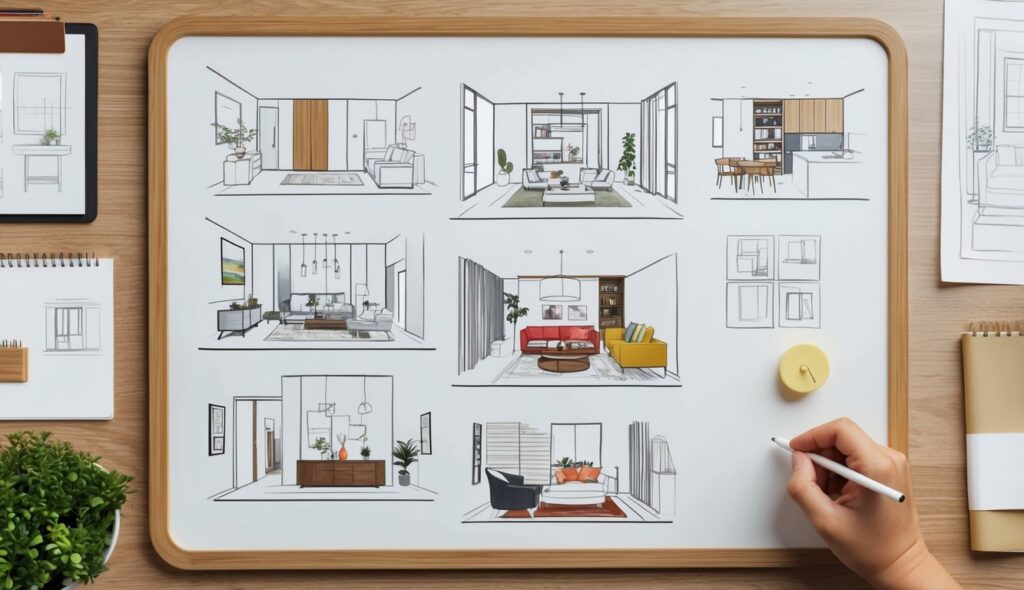Teak is a premier choice in architectural design, offering unmatched durability and a timeless appearance.
Remember to repin your favorite images!
For architects, the challenge lies in integrating teak with other materials to achieve a balanced, sophisticated look.
The key is to combine teak’s natural elegance with materials like aluminum or concrete to create contemporary yet enduring spaces.
By doing so, designers can enhance the aesthetic appeal and functional quality of their projects.
Pairing teak with aluminum introduces a modern flair, perfect for urban settings.
The sleek lines of aluminum complement teak’s natural grain, creating a harmonious blend of rustic charm and contemporary style.
This combination works well in both furniture and structural elements, adding versatility to the design toolbox.
High-quality teak furniture from reputable sources can further elevate the project’s overall finish.
Teak and concrete, on the other hand, provide a striking contrast that is both bold and beautiful.
Concrete’s cool, industrial feel is softened by the warmth of teak, resulting in a balanced and inviting atmosphere.
This pairing is particularly effective in creating focal points in both indoor and outdoor settings, blending durability with aesthetic appeal.
Properties of Teak and Material Dynamics
Teak is known for its natural oils, silica content, and exceptional durability. These qualities make it a prime choice for both structural and aesthetic elements in architectural designs.
Understanding how teak interacts with other materials like metals, glass, and textiles is crucial for creating functional and visually appealing spaces.
Inherent Qualities of Teak Wood
Teak is prized for its natural oils that provide incredible durability and resistance to moisture and insects.
These oils reduce the need for frequent maintenance.
Its high silica content contributes to its strength and hardness, making it an excellent choice for flooring and outdoor furniture.
Its dimensional stability ensures minimal shrinkage, making it suitable for high-precision applications.
The natural beauty of teak, with its rich grain and warm tones, lends elegance to both contemporary and traditional designs.
Combining Teak with Metals and Glass
Integrating teak with metals creates striking contrasts and also provides structural sturdiness.
Metals like steel or aluminum offer a sleek, modern look that complements teak’s warmth.
This combination is often used in contemporary designs for furniture and architectural fixtures.
Glass, when paired with teak, can bring in light and transparency, enhancing the sense of space.
Using glass in windows, partitions, or table surfaces with teak frames provides a balanced aesthetic.
The clarity of glass coupled with the texture of teak creates a timeless, elegant look while improving sustainability through light optimization.
Synergy Between Teak and Natural Textiles
Teak also pairs well with natural textiles.
Materials like silk, wool, and cotton can enhance the warmth and comfort of teak furniture.
Rugs, blankets, and upholstery made from these textiles soften the overall feel of the space, making it more inviting.
This synergy is often seen in interior settings, where the tactile softness of textiles balances the hardness of teak wood.
Such combinations not only provide physical comfort but also create visually rich environments.
The use of textiles with teak contributes to the sustainability goal, as both are natural, renewable resources.
Design Considerations and Best Practices
Combining teak with other materials in architectural design requires careful planning to balance aesthetics and functionality. This section addresses key factors such as visual harmony, practical uses, and sustainable sourcing.
Balancing Aesthetics and Functionality
Architects should prioritize the balance between the aesthetic appeal and practical functionality of teak.
Teak’s rich color and texture make it an excellent choice for a variety of styles, easily blending with materials like metal, glass, and stone.
For instance, teak combined with stainless steel can create a modern, sleek look for kitchen interiors.
In terms of functionality, teak is highly durable and resistant to water and pests, ensuring longevity.
This makes it ideal for high-use areas such as flooring, doors, and outdoor furniture.
By balancing these aspects, architects can create aesthetically pleasing and long-lasting designs.
Architectural Applications of Teak
Teak’s versatility allows it to be used in numerous architectural applications.
Indoors, teak is often used for flooring, windows frames, and doors due to its robustness and attractive appearance.
In southeast Asia, teak is commonly found in traditional structures, highlighting its enduring value.
Outdoors, teak’s weather-resistant properties make it perfect for outdoor furniture and cladding.
It can also be used in high-humidity areas such as bathrooms and kitchens.
Pairing teak with glass or concrete in these settings can enhance both the visual appeal and the functionality of the space.
Sourcing and Eco-Friendly Alternatives
Sourcing teak responsibly is crucial for maintaining ecological balance.
Architects must ensure that their teak is certified by organizations like the Forest Stewardship Council (FSC) to guarantee sustainable practices.
Eco-friendly alternatives to teak include other hardwoods like bamboo or composite materials.
These materials mimic teak’s appearance but have a lower environmental impact.
Using these alternatives can meet the growing demand for sustainable architecture without compromising on the quality and aesthetics of the design.
By integrating eco-friendly solutions, architects contribute to the sustainability of their projects.

